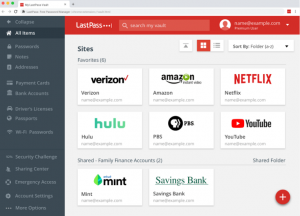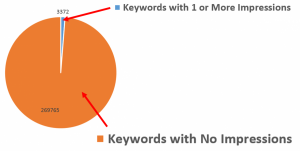— August 21, 2018
So, let’s face it. Sometimes running a business is not all gumdrops and lollipops. It can be frustrating, right? So the question for you today is, have you ever had a client or a project that just did not go the way that you thought it would? Sure you have. Business filled with learning lessons. We all have things to learn and if was super, super easy, we probably wouldn’t be the only one doing it, right?
So, what you have to do is sit down and say, “Okay, occasionally there’s going to be glitches in the system.” Sometimes it’s not going to work out the way you planned. So, you have to think about that for a second. Who’s fault is it? But you don’t necessarily have to assume blame, but a lot of times it’s one of two things. It’s either your fault or it’s the client’s fault.
Now, I know some people will immediately say it’s the client’s fault, but sometimes, the onus falls on you. So here’s some of the things that you have to think about.
It’s Your Fault?
Number one: If it is your fault, it’s usually because you have not set really super, super clear expectations. You may think you have, but you may have deleted or missed some details in the entire sales process. Meaning that there are certain expectations that the client may have that were unwritten that you guys did not 100% agree upon. Another one can be that you maybe over-promised and under-delivered a little bit.
Now, you probably had a process in place where everything worked perfectly, but sometimes the results don’t always end up the way you expect them. The process ends up being more difficult than expected. Maybe you’re trying to reach a certain audience and the audience isn’t responding, at least in my world that happens. Sometimes you can put the best offer in front of people and they just don’t do anything.

The other thing that happens, that could be your fault, is you learn things along the way, alright? An example of this is that I had a client who wanted to transfer their website to a new server. Okay, cool. So we transferred the website and then they say, “Hey, we need to transfer our email over there.” “Okay.” So we copied and pasted and transferred the email. And then midstream through this it’s like, “Hey, our calendars aren’t working.” It was like whoa, I didn’t know about the integration of the calendars and the email and how this all worked, and it was my fault because I didn’t ask the right questions. And frankly, I didn’t know what questions to ask.
So, sometimes you just learn things in the process and now, if that comes up again, I’m going to say, “I don’t do that.” And that happens occasionally in business. You learn. You grow. You change. And you set different expectations.
It’s Your Client’s Fault?
Sometimes, it’s not your fault. A lot of times clients will hear what they want to hear, and they may hear different things. People sometimes remember things differently or maybe just process it differently. But, they’re not necessarily hearing the entire process. In other words, in their minds something was broken and they hire you to fix it. After you fix it, it doesn’t work as expected. Then they turn around and say, “Hey, this is worse than when it was broken.” No, it’s different. It may not work perfectly, but it’s definitely better than what it was.
Now, their expectation may be that you’re going in to change the oil and they’re going to have a new engine that’s going to run faster. That’s just the way they hear it. So sometimes you’ve got to make sure that you’re super, super clear about that.

The other problem that I seem to run into a lot is clients that refuse to participate in the success. In other words, they just want you to do everything, but they won’t give you answers. They won’t fulfill their part of the ballgame. In other words, they want you to hit and then catch the ball. Somebody’s got to be hitting the ball and somebody’s got to catch the ball, and then somebody’s got to throw it back in order to continue the game, right? You can’t hit a ball, run and catch it, then go back and hit it again. So, it’s a hand and glove, and in this metaphor, the glove is the way of doing things.
Sometimes clients just don’t want to get their hands dirty. They just want to say, “You take care of everything.” Well, if they’re not giving you the answers or they’re not giving you access or they’re not fulfilling their part of the bargain, a lot of times that can cause the problem.

The last example is scope creep. If you’ve never heard it, it’s where somebody comes in and says, “Hey, I want a block of cheese,” and then they say, “Well, I wanted a block of cheese, but now I really want a wheel of cheese.” And then it goes a little further and say, “No, I want a cheese factory.” And then the next thing is, “No, I want a farm with a cheese factory and a whole bunch of milk cows in there and all the employees to work for me.” That is scope creep. Where they say what they want and then it just keeps going and growing and growing. I get that a lot of the time.
Somewhere In The Middle
So, how do we deal with all of these things, whether it’s your fault or not? Let me lay out some steps to success.
Communicate
The first thing you have to do is communicate. You have to reset the expectations. You have to make sure that in every step of the process you’re saying, “Here’s what I’m going. Here’s what we expect. And here’s where the results can be expected, but not guaranteed.” So you have to make sure you’re communicating that.
Investigate
If something is not working out the way you or the client intended it to, then you have to invest a little time to investigate what other options are out there. What else can you do? Maybe you need to hire somebody else to come in. Maybe you need to change the way that you’re doing things. But the bottom line is you have to go figure out exactly what’s going to make them happy and what’s going to get the project completed.
Reiterate
The next thing that you have to do is reiterate that you’ve understood where they heard things differently and you set the expectations and things aren’t working out after you investigated it. Now you’ve got to say, “Okay, here’s the process from here. This is what we’re going to do.” And you have to tell them that you’ve found a new way of doing things and you have to help them understand the expectations. How long is it going to take? Is it going to cost more money? How are we going to get to the point where you’re satisfied and I’m satisfied?
Try Your Best
The next thing is you have to try your best. Give it your best shot. But sometimes it just can’t be fixed, especially within the scope of the budget or the timeframe or whatever it is. You have to sit down and say, “Hey, I’m going to do my best to make this work,” but there gets to be a point where you just have to say, “You know what? I don’t think I can do this.”
Let It Go
So then, you have to get to the point where you have an agreement to let go. You want to leave on amicable terms. If you can solve the problem and it costs a little more, takes a little longer, and the client agrees to it, then give it your best shot. But sometimes you can go down that road and still not meet their expectations. So you have to work out an exit plan, and make sure that exit plan is amicable. In other words, they’re agreeing to it, you’re agreeing to it, and you’re not just leaving them hanging. Sometimes you have to have that hard conversation and just say, “Look, I am the best fit. I cannot fix this problem.” What you should do is research an option for them and see if you can help them find a solution.
Final Thoughts
The best thing that you can do is try to meet their expectations, but maybe you can’t always. So, number one: Be realistic. Realize that you don’t know everything and sometimes you’re going to learn some new stuff. Number two: Poo-poo happens, alright? Sometimes things break in the process or the process breaks or expectations change. So when things get tough on a project, you need to regroup, rethink, and keep moving forward, even if it means giving up and moving on.
I would love to hear your thoughts on this. Comment below and share your thoughts, ideas or questions about showing the concepts presented. Have you had to overcome any of the presented concepts? What worked and what did not live up to expectations? Do you have any ideas or advice you could share?
Business & Finance Articles on Business 2 Community
(93)







